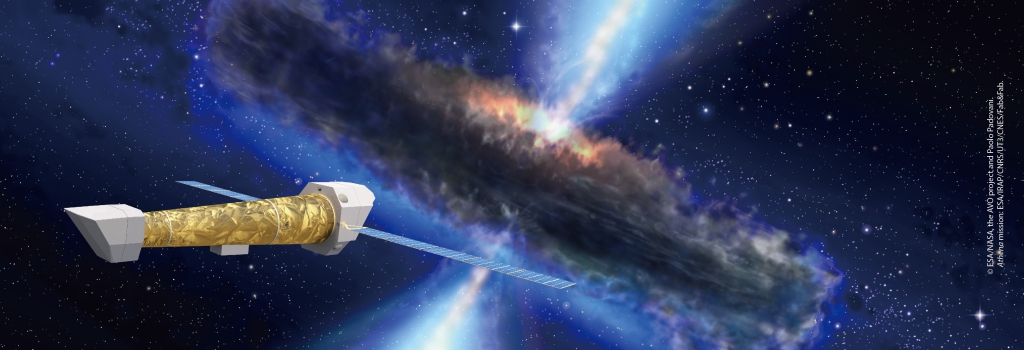
Status and milestones

Current status of the mission and upcoming milestones
On 8 November 2023, the ESA Science Program Committee (SPC) approved a modified version of the Athena X-ray observatory and recognized that NewAthena, as the flagship mission of the ESA Science Programme, will transform our knowledge in almost all corners of modern astrophysics.
The industrial activities of NewAthena have started during the second quarter of 2024 to end with the interim review in June 2025. Instrument consortia will face their Systems Requirements Review (I-SRR) in June 2026.
Prior to adoption, the mission status is subject to a thorough independent ESA review, called the Mission Adoption Review (MAR), scheduled for the last quarter of 2026. The review evaluates the mission definition maturity, technology readiness and implementation risks.
The review results are made available to the Science Programme Committee (SPC) and constitute, together with the SSAC scientific assessment, the basis of ESA's recommendation to the SPC to implement the mission. The mission adoption by the SPC will take place in the first quarter of 2027.
In the first quarter of 2028, the mission will enter Phase B2/C/D/E1 with an industrial kick-off.
The Spacecraft Preliminary Design Review (SC PDR) and Critical Design Review (SC CDR) are slated around 2029 and 2031 respectively.
By 2034, the mission will achieve a significant milestone with the delivery of the Instrument Flight Modules.
The mission will reach its pinnacle with the launch in 2037. This event will be the culmination of years of meticulous planning, development, and testing and the starting point of the unveiling of the X-ray secrets of the universe.
Past Milestones
The Athena X-ray Observatory was selected in 2014 by ESA to become the second (L2) L-class mission of its Cosmic Vision programme.
The WFI and X-IFU instruments consortia were officially endorsed by ESA in December 2018. The following milestone for the instruments teams was the Instrument Preliminary Requirements Review (IPRR) which was successfully passed by the WFI on 31 October 2018 and by the X-IFU on 11 April 2019.
Phase A of the mission ended on 12 November 2019 with the Mission Formulation Review that led to the transition to Phase B1. However, this phase was truncated in June 2022 when the Science Program Committee (SPC) of ESA agreed on a redefinition of the mission to comply with the prospective level of resources of the Science Program. This decision led to an overwhelming response from the scientific community to the public call to support the mission.
Between November 2022 and November 2023, Athena has undergone a “design-to-cost” exercise, ensuring that the total mission cost to ESA remains under a strict 1.3G€ cap. This process has been supported by the NewAthena Science Re-definition Team (SRDT).
On the 8th of November 2023, ESA’s Science Programme Committee endorsed a rescoped version of the Athena X-ray observatory. The SPC has recognized that NewAthena, as a flagship mission of the ESA Science Program, will transform our knowledge in almost every corner of modern astrophysics.
This great achievement has been the result of a year-long collective design effort by ESA, the Instrument Consortia, and the SRDT with the active participation of many members of the Athena community. This effort led to a new mission concept that is technically and financially affordable, while enabling transformational science. A key role in demonstrating the flagship nature of NewAthena has been played by the SRDT, whose co-Chair, Mike Cruise, presented the excellent science case of NewAthena to the meetings of the Advisory Structure of the ESA Science Program.

